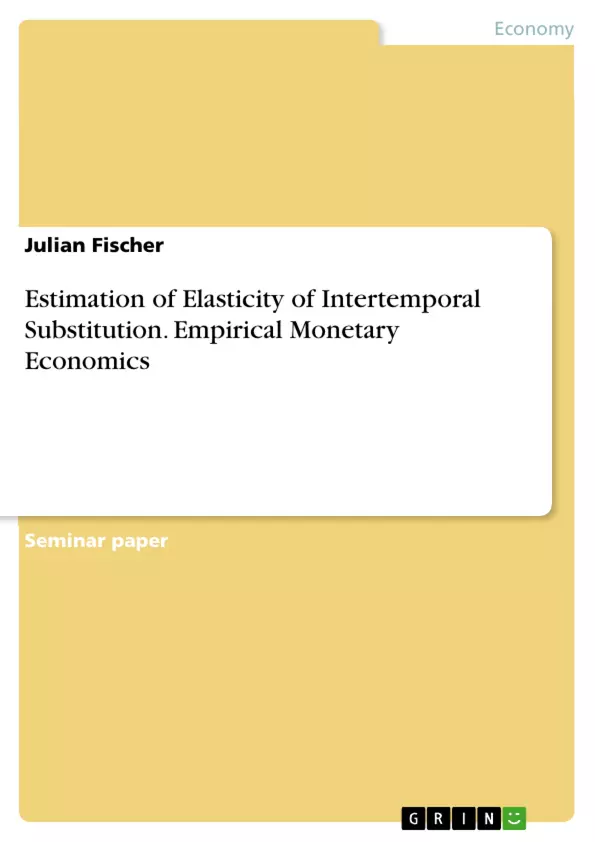In this thesis the predictive power of individual survey participants on expected macroeconomic values is analysed. The research results of Crump (2015) are investigated and the elasticity of intertemporal substitution (EIS) is estimated according to their model. The core estimate results in an EIS coefficient of 0.839, which is marginally higher than previous results in literature.
Considering the predictive power, demographic variables, sensitivity components, and time dependent fixed effects, the range is approximately 0.6 to 0.9, depending on the specification, where the estimated EIS values range. In particular the subdivision in different levels of education allows interesting and validated implications. The interpretation of the EIS offers a helpful contribution for many market actors and especially economic policymakers. For example, the effectiveness and targeting accuracy of an economic stimulus plan in the current corona crisis could be increased with the help of the empirical findings of the EIS.
Especially in times of crisis, such as the current corona pandemic, we are repeatedly reminded that in our economic world all market participants and institutions are deeply interconnected due to dependencies and expectations. Not only central banks, which in recent years have been accused of having a reduced capacity to act as a result of low interest rate policies, but also investors, entrepreneurs and governments are interested in gaining a deeper understanding of the impact of expectations on real value development.
Table of Contents
- Introduction
- Theoretical Background of estimating the EIS
- Micro- and Macrodata
- Predictive Power
- Evidence of the Elasticity of Intertemporal Substitution (EIS)
- Data
- Empirical results
- Testing the predictive power
- Estimating the EIS
- Tests for Excess Sensitivity
- Conclusion
Objectives and Key Themes
This thesis analyzes the predictive power of individual survey participants of expected macroeconomic values. It investigates the research findings of Crump, et al. (2015) and estimates the elasticity of intertemporal substitution (EIS) according to their model. The study aims to contribute to the understanding of how individuals make economic decisions and how their perceptions of future economic conditions influence their behavior.
- Predictive power of individual survey participants
- Estimation of the Elasticity of Intertemporal Substitution (EIS)
- Impact of demographic variables on EIS
- Sensitivity components and time-dependent fixed effects
- Implications for economic policy makers
Chapter Summaries
- Introduction: This chapter provides an overview of the thesis, outlining the research question and the methodology used. It introduces the concept of the EIS and its importance for economic decision-making.
- Theoretical Background of estimating the EIS: This chapter reviews the theoretical framework for estimating the EIS. It discusses the use of micro- and macrodata, the concept of predictive power, and existing evidence on the EIS.
- Data: This chapter describes the data used in the study, including the source, sample size, and key variables.
- Empirical results: This chapter presents the empirical findings of the study, including the results of the tests for predictive power, the estimation of the EIS, and the analysis of excess sensitivity.
Keywords
The core keywords of this thesis are Elasticity of Intertemporal Substitution (EIS), predictive power, microdata, macroeconomic values, sensitivity components, time-dependent fixed effects, demographic variables, and economic policy implications. The research focuses on estimating the EIS using individual survey data, analyzing the predictive power of respondents, and identifying factors that influence the EIS.
- Quote paper
- Julian Fischer (Author), 2020, Estimation of Elasticity of Intertemporal Substitution. Empirical Monetary Economics, Munich, GRIN Verlag, https://www.grin.com/document/961676



